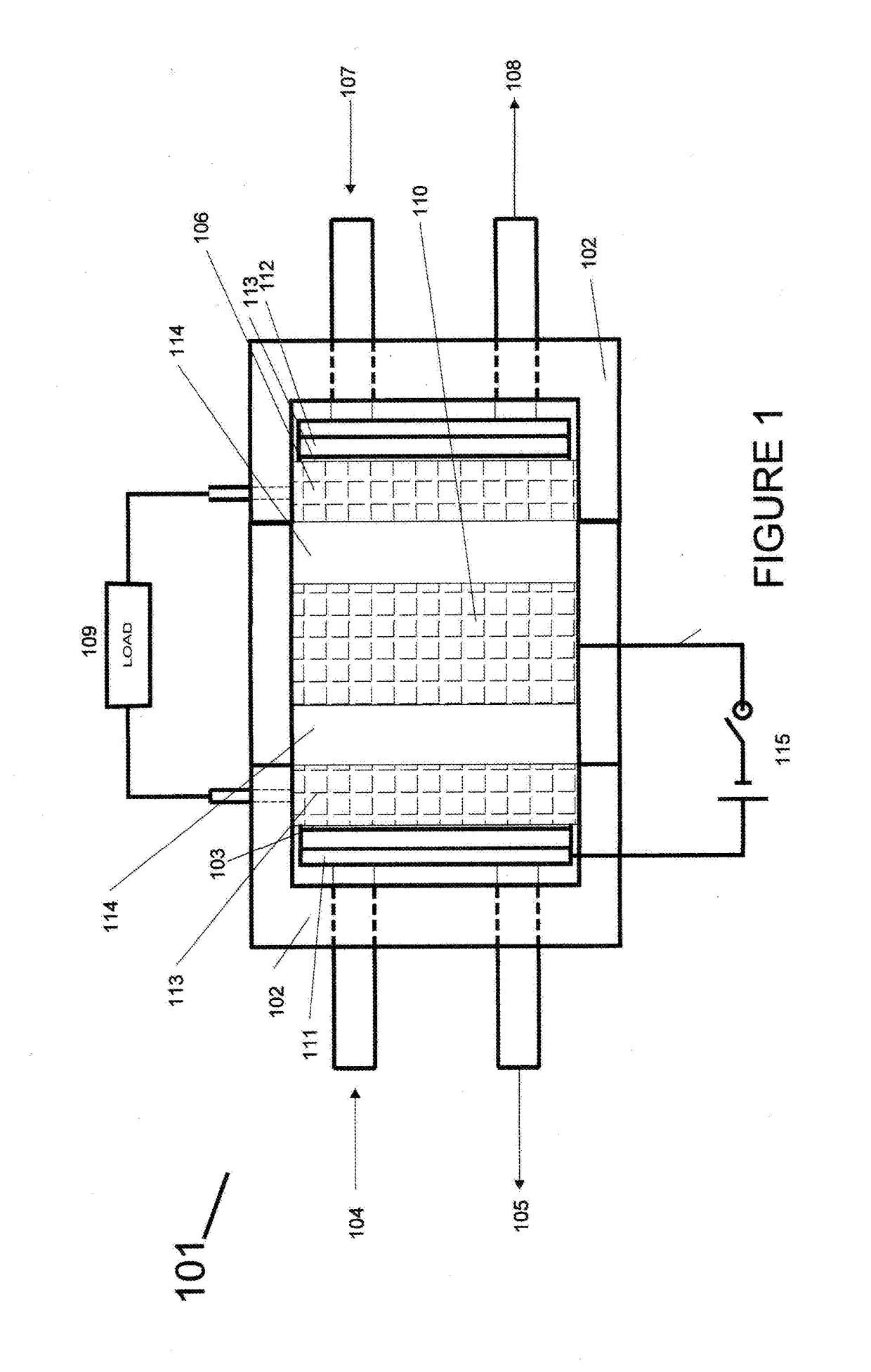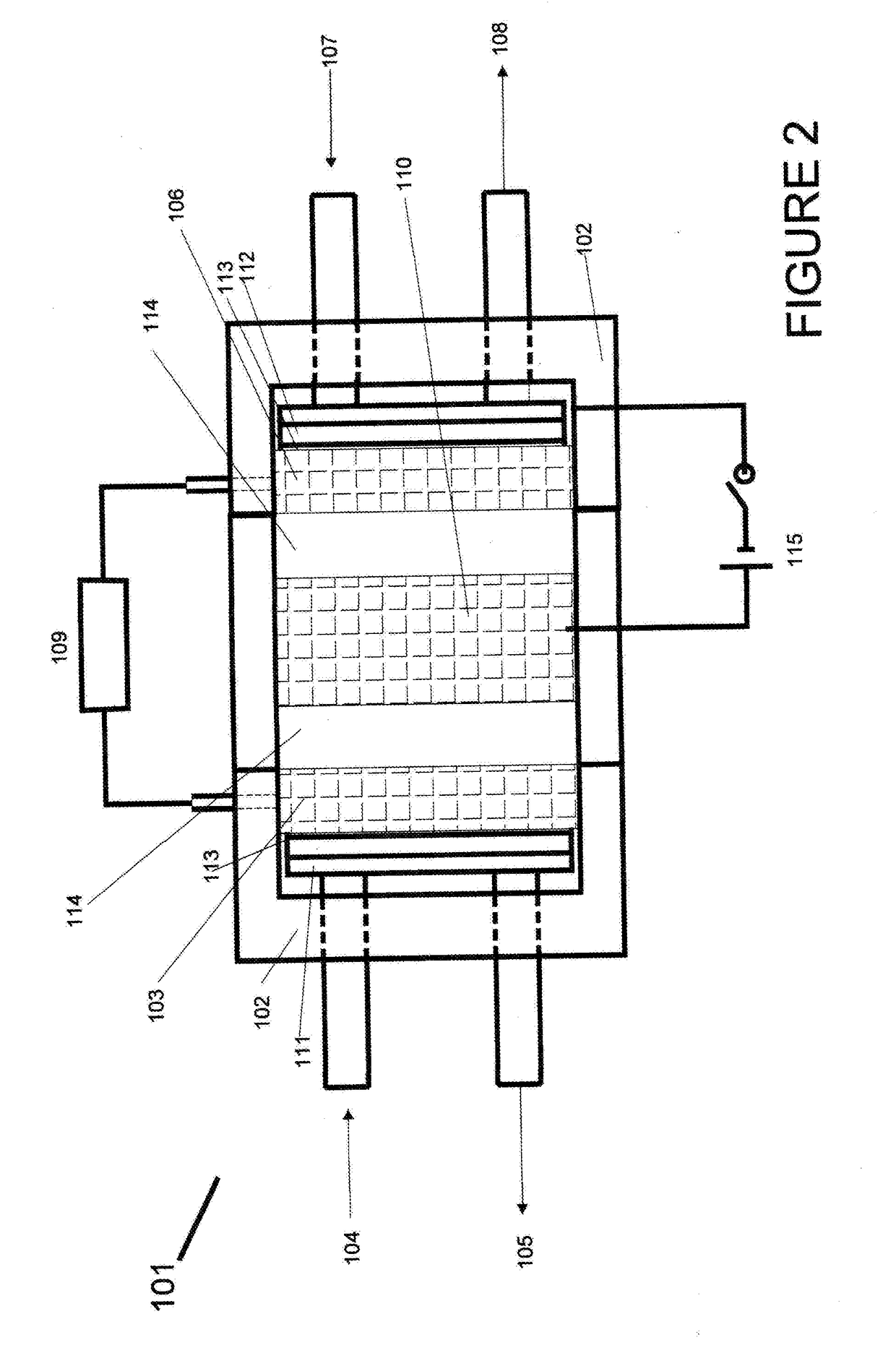Electrolyteless fuel cell system
a fuel cell and electrolyte technology, applied in the direction of fuel cells, fuel cell details, electrical equipment, etc., can solve the problems of affecting the performance of fuel cells, and affecting the operation of fuel cells
- Summary
- Abstract
- Description
- Claims
- Application Information
AI Technical Summary
Benefits of technology
Problems solved by technology
Method used
Image
Examples
Embodiment Construction
[0031]The disclosure provides an electrolyteless fuel cell system, which includes an anode; a cathode; an electrical grid between the anode and cathode; an anode side grid bias electrode; a cathode side grid bias electrode; and an electrical grid power supply, wherein the electrical grid is biased negative with respect to the anode through the anode side grid bias electrode and the electrical grid power supply, or wherein the electrical grid is biased positive with respect to the cathode through the cathode side grid bias electrode and the electrical grid power supply.
[0032]In one aspect, the disclosure provides an electrolyteless fuel cell system, wherein the electrical grid is biased negative with respect to the anode, to create a potential difference between the electrical grid and the anode, wherein incoming hydrogen is used as a fuel source at the anode.
[0033]In another aspect, the disclosure provides an electrolyteless fuel cell system, wherein the negatively biased electrical...
PUM
 Login to View More
Login to View More Abstract
Description
Claims
Application Information
 Login to View More
Login to View More - R&D
- Intellectual Property
- Life Sciences
- Materials
- Tech Scout
- Unparalleled Data Quality
- Higher Quality Content
- 60% Fewer Hallucinations
Browse by: Latest US Patents, China's latest patents, Technical Efficacy Thesaurus, Application Domain, Technology Topic, Popular Technical Reports.
© 2025 PatSnap. All rights reserved.Legal|Privacy policy|Modern Slavery Act Transparency Statement|Sitemap|About US| Contact US: help@patsnap.com



